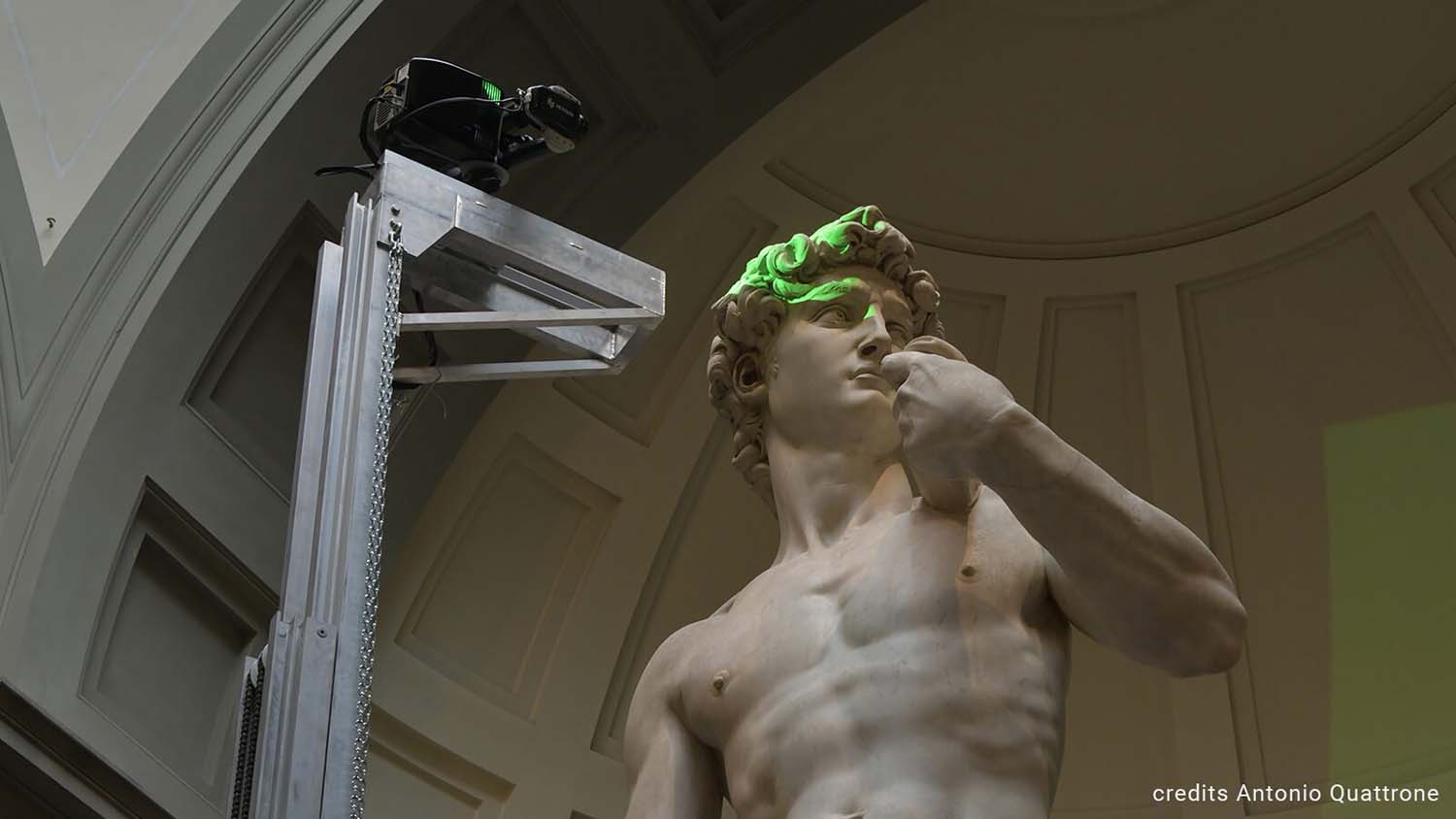Michelangelo’s David has been re-produced for the Italian Pavilion at Expo Dubai, using Hexagon scanning technology to create a digital twin of the sculpture.
The data was later 3D printed at 1:1 scale for the exhibition, but the scanning detail alone derived additional learnings on top of the printable STL file.

The extraordinary detail of the data reveals, for example, the effects of acid rain, dust, and traces of the different tools used to create it.
It is hoped that this level of information can be used by experts and restorers to preserve the David, and other iconic art pieces, by anticipating and preventing degradation.
This latest project follows a similar one completed by Stanford University in 1999, which took one month and 22 people to achieve a lower resolution scan. As technology advances it’s hoped that an even higher level of detail can be achieved.
Nevertheless, there were a number of additional challenges to overcome the time round.
An 800mm distance was required between the scanner and the statue to achieve optimum detail. This was particularly tricky when trying to capture intricate parts.
Additionally, given the 7m height of the David, the scanners had to be mounted on a stair and raised, after which the team would analyse the picture to check for resolutions and accuracy, and repeat if necessary.
The scan took two people 10 days to complete. Two Hexagon technologies, an Aicon StereoScan Neo structured light 3D scanner and a Leica Absolute Tracker with handheld 3D scanner, were used to ensure the optimum accuracy while managing the scale of the challenge.
The mix of these two technologies was critical to achieve the best result; the laser tracker gave high accuracy across large areas and the structured light 3D scanner is able to achieve even higher resolution when focused on small areas.
Cesare Cassani, Hexagon’s Manufacturing Intelligence automation technologies & portable systems manager, helped to overcome the challenges: “Not only was the scale enormous, but the time constraints were also tight, and we had to overcome a number of obstacles as we went along.
“Specific parts such as the inside of the hands, and underneath the bent arm, for example, proved particularly challenging, as well as capturing all the dents and imperfections that the David has incurred over the years.”
The re-production of Michelangelo’s David is a project jointly promoted by the Italian General Commissioner’s Office for Expo 2020 Dubai, the Galleria dell’Accademia Museum of Florence and the Ministry of Culture in partnership with the Department of Civil and Environmental Engineering at the University of Florence.






